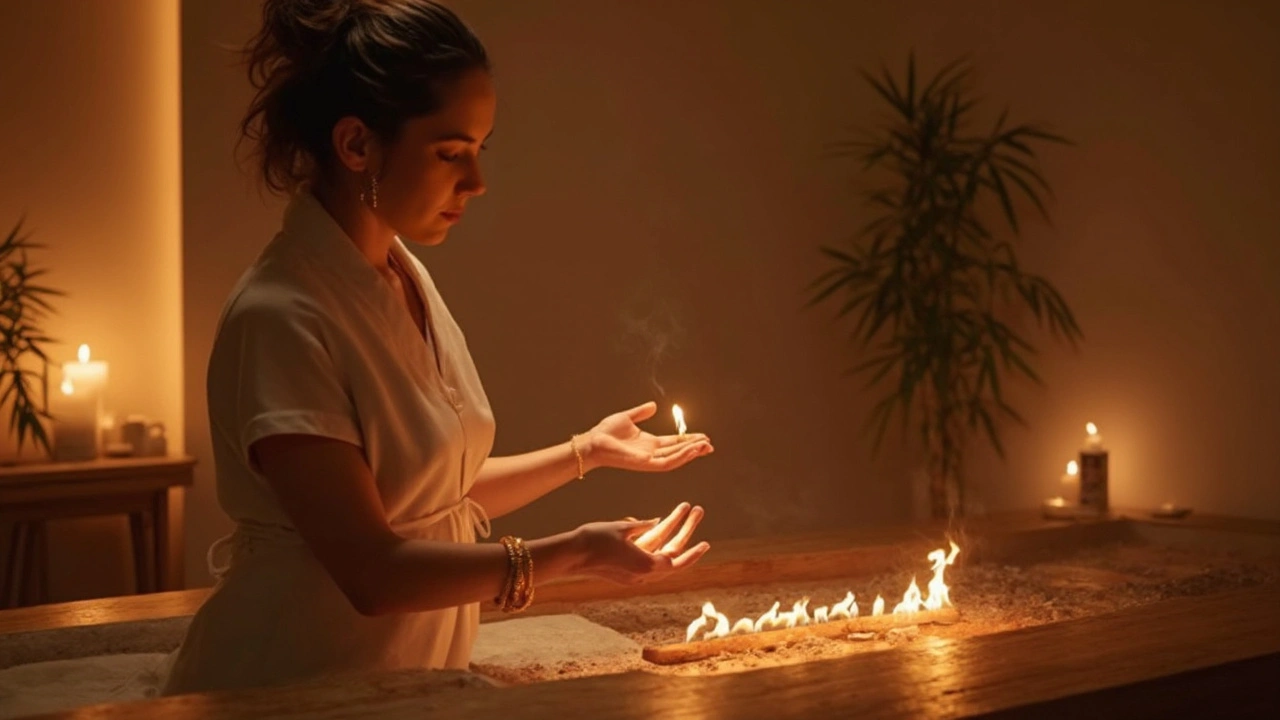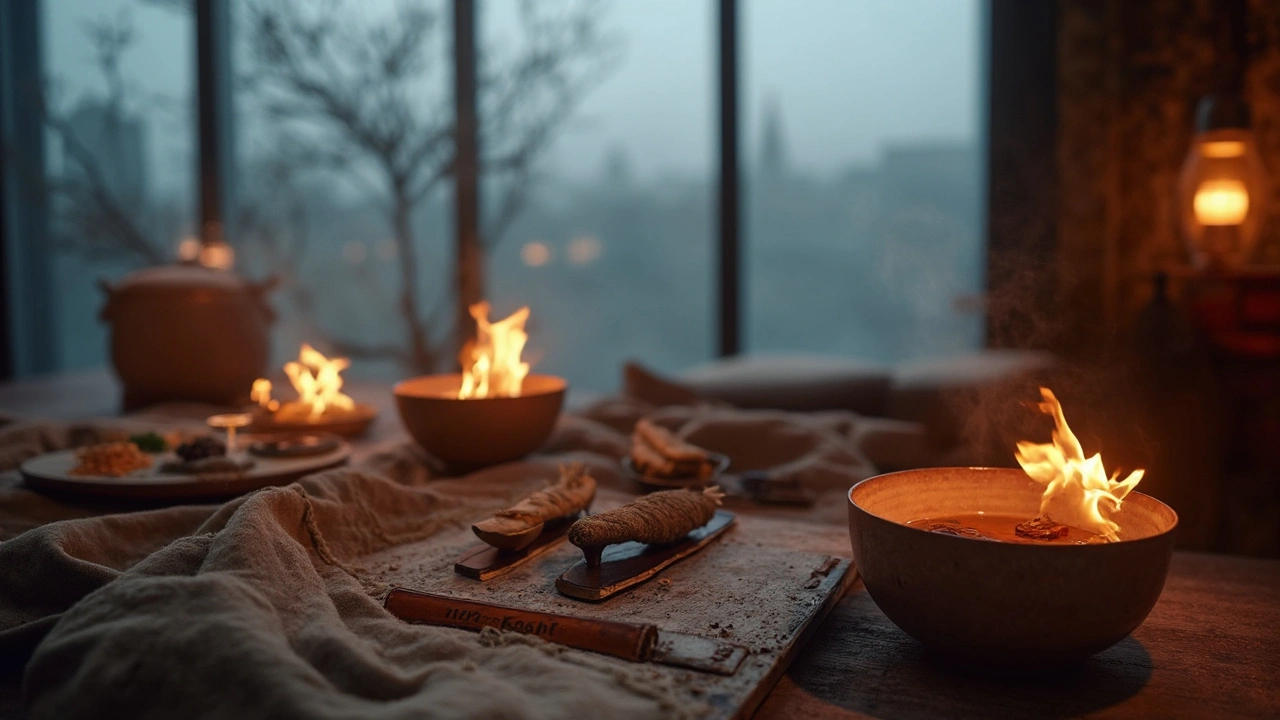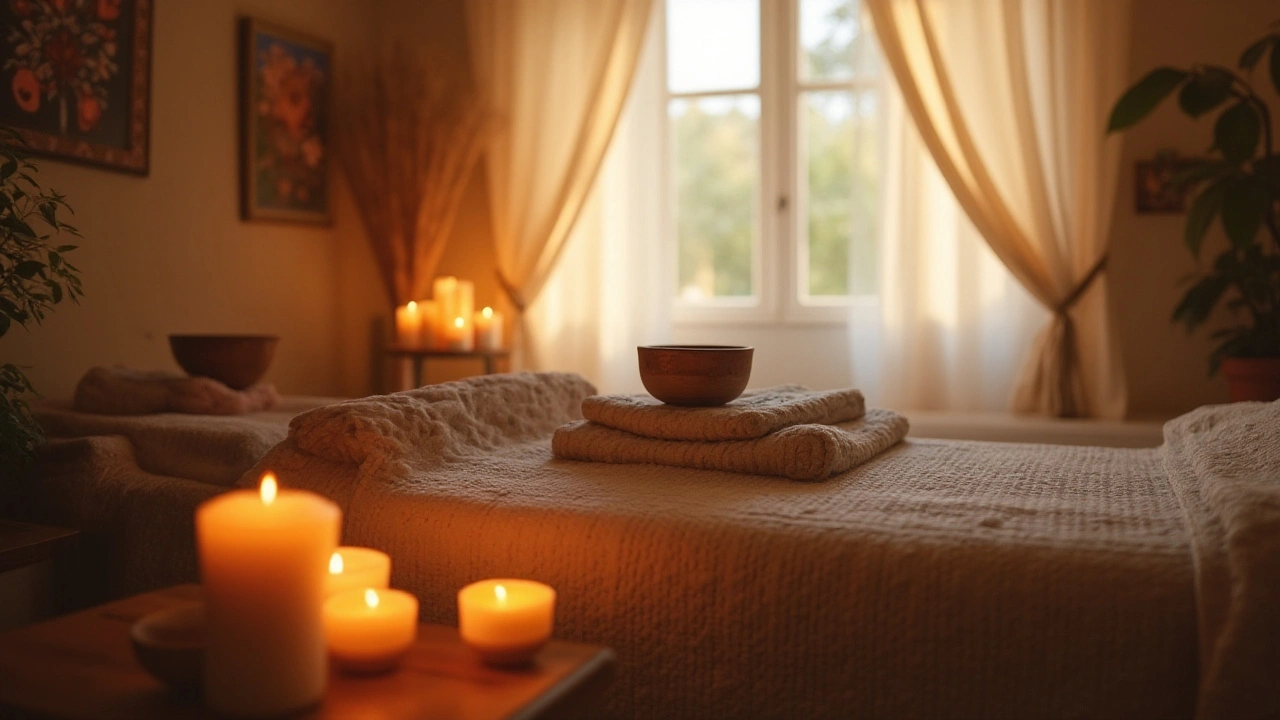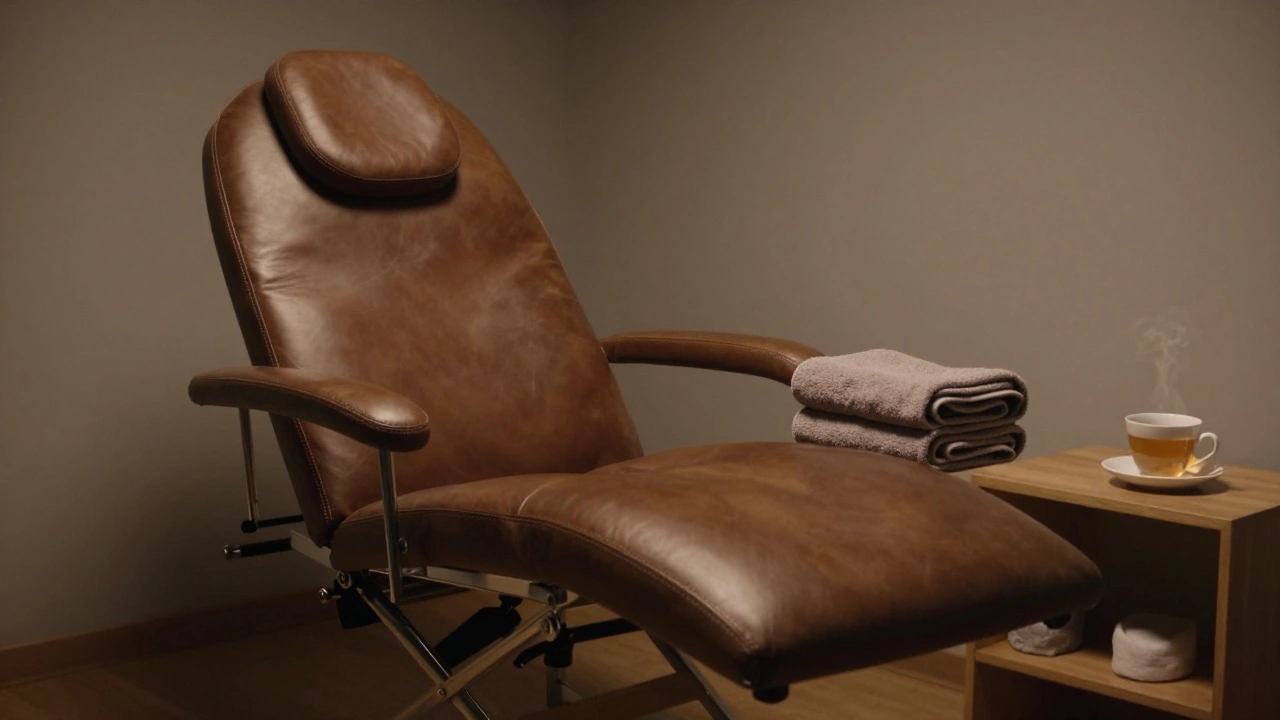Fire Massage Therapy: Ignite Your Wellness with This Ancient Heating Treatment

Picture this: you're lying on a massage table, wrapped in soft towels, music humming low in the background. But it's not just those clever hands working on your muscles—there's actual flame involved. Fire massage has turned up the heat in the world of wellness treatments, and it's got wellness lovers talking in cities like Beijing, Moscow, and yes—it's even sparking curiosity among Aussies in Perth and Sydney. Some swear it's the ultimate way to melt away stress. Others can't quite believe it's a real thing. But behind the drama, there’s ancient wisdom and some modern science to it. Ready to get your head around why so many are daring to try fire massage?
Fire Massage—What Sparks the Craze?
Let’s clear up the basics first. Fire massage—sometimes called "fire therapy"—isn’t something new dreamed up for TikTok views. This technique is rooted in Chinese healing, and while you won’t see much of it advertised in your everyday Aussie spa, it’s gaining more buzz internationally. At its simplest, a therapist places a damp towel and another soaked in a special alcohol-based solution on your back or limbs. They light it for a few seconds—a thick barrier keeps the flame from actually touching your skin. The fire is then swiftly put out, leaving behind a dense, deep heat that seeps into muscles and joints.
The thinking? Heat like this encourages blood flow, helps muscles relax, and supposedly unlocks energy channels, much like acupuncture or cupping. Some fans believe it ‘burns out’ toxins, though let’s be straight—there’s no hard evidence for that bit. What’s real is how heat supports muscle relaxation and can kick off a feel-good flood of endorphins. This isn’t a quick beauty trend—it’s a blend of old-school technique and adventurous spirit.
Here’s something wild: In certain parts of China, fire therapy practitioners claim it goes back 5,000 years. Therapists sometimes use special herbs or essential oils beneath the flame to add sensation or aroma. In Russia, fire massage called "Ognenniy massazh" caught on in sporty circles, sold as a way to speed up recovery. Even here in Australia, a handful of therapists offer heat-based treatments drawing from this tradition, though direct fire massage remains low-key and highly regulated for safety reasons.
| Country | Popularity Level (1-10) | Typical Session Cost (USD) |
|---|---|---|
| China | 9 | 15-30 |
| Russia | 7 | 25-60 |
| Australia | 4 | 35-80 |
That said, the burning question is: does it live up to the hype—and is it safe?
What Exactly Happens During a Fire Massage?
If the thought of flames near your body sounds like something out of an action flick, you’re not alone. But the reality is much more chill (if a bit steamy). Here’s the breakdown of what typically goes on in a legitimate fire massage treatment:
- Consultation and Screening: A reputable practitioner starts by asking about your health history. Do you have sensitive skin, circulation problems, or health conditions like diabetes? Fire massage isn’t for everyone, so a quick Q&A matters.
- Preparing the Skin: Next, your skin gets covered with towels soaked in a mix that might include alcohol, water, and sometimes an herb infusion. This forms a protective layer—no direct fire on your bare skin.
- Lighting the Fire: A smaller towel or sheet, swabbed with the alcohol blend, is placed on top. The therapist lights this for a matter of seconds—usually 5 to 10—while constantly monitoring your comfort.
- Dousing and Massaging: The flame is quickly put out, often by smothering with another damp towel. Heat lingers, and the therapist uses this moment to massage muscles or do acupressure.
- Repeating the Process: Depending on the person’s needs and tolerance, the cycle might be repeated up to three times on different body areas.
Throughout, communication is key. A good therapist will ask how the heat feels, and they’ll never force you to keep going if you’re uneasy—or if your skin turns beet red. The room usually gets kept warm, and you’ll still get all the usual relaxing touches of a regular massage.
Want a tip if you’re tempted to try? Only see someone with formal training in East Asian bodywork and first aid. Just as you wouldn’t DIY laser hair removal, fire therapy isn’t a home experiment. If a spa ever offers you ‘DIY fire massage kits’—run, don’t walk.

Benefits People Claim from Fire Massage
Now, what draws people to such a fiery ritual? For lots, it’s the promise of deep, lasting muscle relaxation and a shakeup from the usual wellness routine. Advocates tout a stack of potential benefits. But let’s separate the real from the wishful.
- Muscle Relaxation: The heavy heat feels a bit like being hugged by a pile of electric blankets, only more concentrated. Sportspeople and desk jockeys alike rave about relief from tight shoulders, back pain, and knots.
- Pain Relief: A handful of small studies from China and Russia suggest that high heat applied briefly can help with lower back pain and chronic joint aches, especially when combined with massage. It works on the same principle as using heat packs or warm baths—the warmth helps dull pain signals and boosts circulation for healing.
- Blood Flow Improvement: A study published in 2022 in the Journal of Traditional Chinese Medicine found that short bursts of toxic-free open heat increased local blood flow by as much as 28% for up to an hour after treatment.
- Stress and Sleep: People report feeling super relaxed, almost heavy, afterwards. This may link to heat’s calming effect on the nervous system—think about how you feel after a hot shower or spa. Some regulars say the routine helps with their sleep patterns, especially if done in the evening.
- Making Wellness Exciting: Jaded by another boring ‘Swedish massage’? Fire therapy has a thrill factor, a hint of danger (safely managed), and a novelty that makes it memorable. For some, just stepping out of their comfort zone brings a mental boost.
Keep in mind, most doctors would caution that no miracle cures are involved. Science supports heat therapy as part of pain and relaxation routines, but don’t expect it to detox your organs, ‘burn away fat’, or grant supernatural healing. Still, many came for the novelty and left with a pleasant surprise: long-lasting warmth and muscle comfort that put regular massages to shame.
Risks, Safety, and Who Should Skip It
Nothing raises eyebrows like the idea of fire near your body. And yes, there are legit risks. Let’s be honest—this treatment isn’t for everyone.
Burns are the obvious danger, especially with inexperienced or careless therapists. If the towel isn’t thick enough or the alcohol mix wrong, you could end up with first-degree burns. Allergic reactions are another gamble if the preparation uses herbal infusions you haven’t tried before. If you’ve ever had a skin reaction to plants or alcohol-based products, mention it upfront.
Fire massage should be an absolute no-go for folks with:
- Skin conditions like eczema, psoriasis, or open wounds
- Very sensitive or thin skin (common with diabetes, blood thinners, or age)
- Breathing troubles—alcohol fumes can be strong
- Pregnancy, unless cleared by a healthcare pro
- Certain heart problems or nerve disorders
Red flag: If you walk into a spa and see open flames waving around or therapists fumbling with bottles, call it quits. A pro fire massage should look boringly routine—no drama, just quick, safe, and methodical moves. A top tip? Check for certificates in Traditional Chinese Medicine or similar fields, and always ask about first aid skills. Even in China, fire therapy isn’t done by rookies. There’s not much regulation in Australia, so personal research is extra important.
And what about pain? Mild tingling, a warmed-through sensation, or redness fading in under 30 minutes is normal. Anything more, or pain that lingers, is a warning sign. Never, ever try this at a party or as a ‘challenge’ after a beer—hospitals see enough accidents already.

How Fire Massage Fits Into Modern Wellness Routines
So, does fire massage earn a place in 2025’s world of wellness crazes? Turns out, it fits right in with seekers keen on smarter self-care. Booking a session is almost a badge for people burnt out on predictable spa days. There’s this trend of pushing old boundaries—getting into cold plunges, sound baths, or guided plant journeys—and fire therapy sits comfortably among those bold wellness experiences.
In practice, most fans don’t rely solely on fire massage. They integrate it as a treat every few months, pairing it with yoga, pilates, or deep tissue work. Some even see it as a body ‘reset’ after ultra-busy weeks, the way others reach for a float tank or infrared sauna.
Fire massage clubs in places like Shanghai or Moscow make the ritual social—whole groups book out a studio, sip herbal tea afterwards, and chat about their experience. The vibe is part ceremony, part adventure. Here in Perth, curious clients are more likely to ask for it by name in wellness clinics known for Eastern treatments or holistic healing. It’s not a walk-in, on-a-whim thing; it’s chosen on purpose, after plenty of research and chat with the provider.
A couple of cool tips for those looking to dip their toes into fire therapy:
- Start slow—book a basic session and ask for a patch test on a small area first.
- Hydrate well before and after, as heat draws water from your system (think sauna).
- Go during cooler weather—Aussies especially know that summer and heat therapies don’t always mix well.
- Plan to relax after. Your body absorbs the heat, and you might feel sleepy or heavy for hours later.
If you’re just in it for the Instagram, weigh the risk before jumping in. But for mindful wellness explorers who respect the roots of the therapy and pick trained providers, fire massage adds a spark to the regular routine. Just don’t expect magic—appreciate the ancient vibe, the thrill, and the rich warmth lingering on your skin long after the flames are out.





